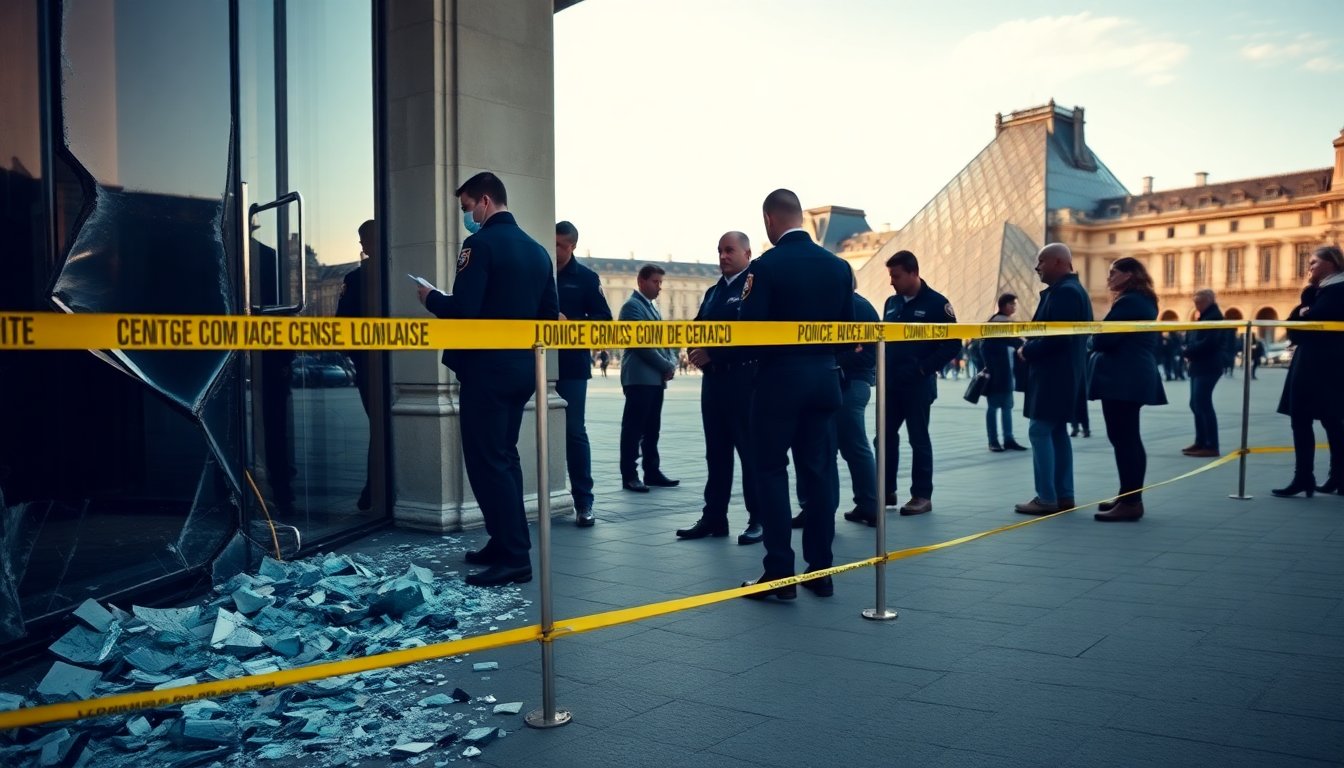Table of Contents
In an alarming incident at the Louvre in Paris, authorities arrested two individuals in connection with the theft of precious crown jewels. This theft, which occurred in broad daylight, has raised significant concerns regarding the museum’s security measures, as the thieves managed to escape with valuables valued at approximately $143 million CAD.
The theft took place on October 19, when a group of four thieves executed their plan with alarming efficiency. They used a crane to smash a window and gain access to the museum during operational hours, highlighting major lapses in security protocols.
The swift getaway on motorcycles further emphasized the brazen nature of their crime.
The arrests unfold
The Paris prosecutor’s office confirmed the apprehension of two suspects the evening following the theft. One suspect was caught at Charles de Gaulle Airport while attempting to board a flight reportedly bound for Algeria.
The second suspect was taken into custody later that night in Seine-Saint-Denis, a suburb located north of Paris.
Details of the robbery
The heist occurred at approximately 9:30 AM local time and lasted only a few minutes, resulting in the disappearance of nine significant pieces of jewelry from the museum’s Galerie d’Apollon.
This gallery is known for housing the remains of the French crown jewels. The stolen items included a tiara, a necklace, and an earring belonging to Queen Marie-Amélie, several emerald pieces from the Empress Marie Louise collection, and a brooch known as the reliquary brooch.
French Interior Minister Laurent Nuñez described the incident as a “major robbery,” emphasizing the cultural and historical significance of the stolen items. The culture ministry confirmed that the jewels belonged to notable figures such as Empress Eugénie, the wife of Napoleon III, further underscoring the theft’s impact on France’s national heritage.
Security concerns arise
The ease with which the thieves executed their plan has initiated a national conversation about museum security. Reports indicate that the thieves entered through a window cut with power tools, avoiding confrontation by threatening museum guards, who subsequently evacuated the area.
Investigation insights
As investigations progressed, DNA evidence collected from the scene led to the identification of one of the suspects. Additionally, various items, including gloves and a high-visibility jacket, were left behind, providing investigators with crucial forensic leads. The thieves reportedly dropped a crown during their escape, which once belonged to Empress Eugénie, raising further questions about their getaway.
Security assessments conducted after the incident uncovered that a significant portion of the museum lacked adequate surveillance. A preliminary report indicated that one-third of the rooms in the vicinity of the heist had no CCTV coverage, severely limiting the museum’s ability to monitor the situation effectively. The museum’s director confirmed that the exterior cameras were outdated, rendering them ineffective during the robbery.
In light of the incident, French cultural institutions have begun enhancing their security measures. The Louvre has taken immediate action by relocating its most valuable items to the Bank of France, where they will be kept in a secure vault located 85 feet beneath the surface.
This brazen daylight robbery at the Louvre not only highlights vulnerabilities in museum security but also raises questions about how cultural institutions can better protect their invaluable heritage. As the investigation unfolds and more details emerge, the art world watches closely, eager to see how France will respond to this significant breach of security.





